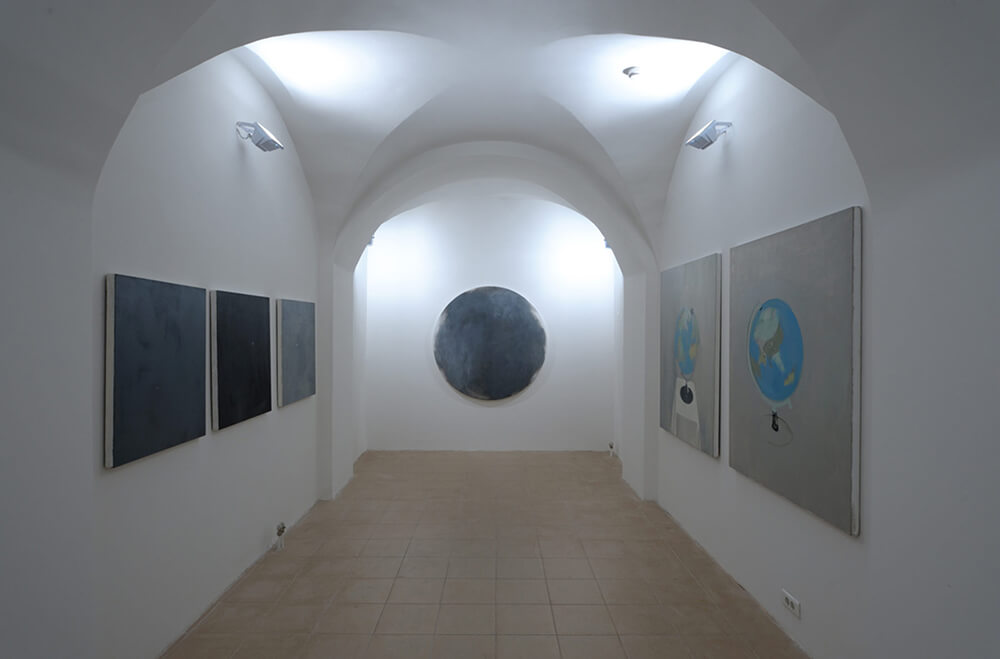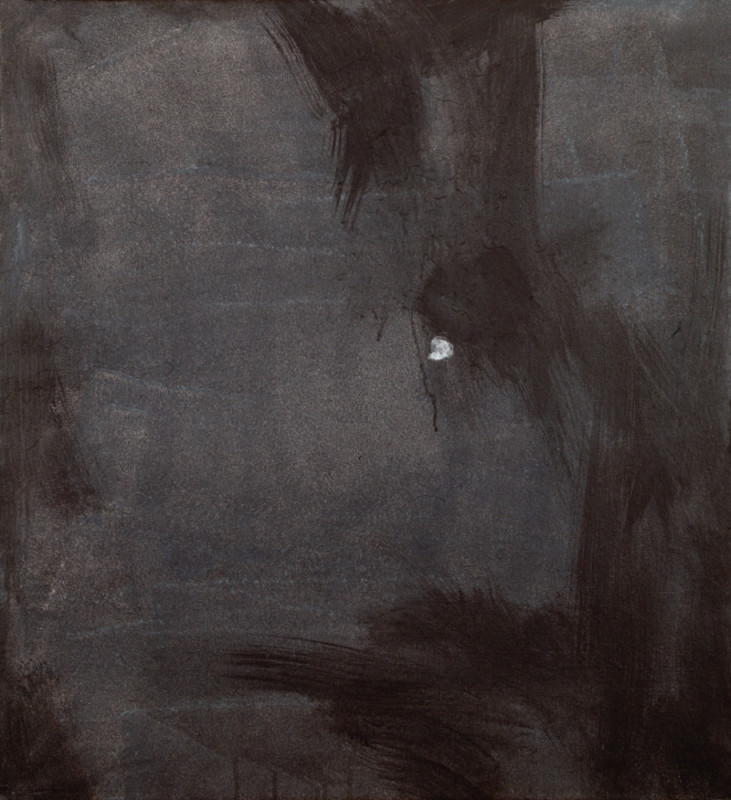Popular Astronomy
2009
Moscow Museum of Modern Art
Curator: Teresa Mavica
September 24 ‚ÄĒ October 25, 2009
Exhibition views by Yuri Palmin
Which is the reality that confronts the viewer of Alexandra Paperno‚Äôs ‚ÄúPopular Astronomy‚ÄĚ? Is it the reality of painted canvases, hung on the walls of an exclusive gallery space? Or, perhaps, the reality of the everyday: the familiar, unidimensional reality, based on the scientific worldview, woven from images and conventional symbols?
In the second half of the twentieth century, the role of scientific knowledge in society began to change. Penetrating the realm of the everyday, science was forging a new understanding of the world. With the rise of popular science publications, it had also begun to enjoy a near-total legitimacy. ‚ÄúPopular Astronomy‚ÄĚ, ‚ÄúPopular Mechanics‚ÄĚ, ‚ÄúPopular Philosophy‚ÄĚ, ‚ÄúPopular Art‚ÄĚ all become identifying signs of a modern, disenchanted world. Meanwhile, the mind of modern man became etched with their textbook images and accompanying materials. What these images actually related to was of secondary importance: by now, these signs have almost entirely lost any connection they had with the signified.
When brought to the canvas by the painter’s brush, however, conventional images devoid of meaning take on an entirely new tonality. Concentrated focus, unwavering gaze and artistic expression all combine to instill new life into dead signs. The painted picture you see comes to ask the question: what do you see? Do you understand what you see?
In Alexandra Paperno‚Äôs project, ‚Äúpopular‚ÄĚ is not allied with ideas of accessibility or intelligibility, with the conventionality of values and meanings. Instead, ‚Äúpopular‚ÄĚ is understood as a particular form of social practice, an instigating thought. It is an attempt to overcome the closed parochialism of the artistic and scientific systems; an attempt to return to the subjective entirety of practical experience. In a very strange way indeed, ‚ÄúPopular Astronomy‚ÄĚ provides visual images that draw a viewer away from any benign equilibria of visual stereotypes. In other words, it is an exhibition that allows the viewer to be astonished once again.
Polina Zhurakovskaya
* * *
In her project “Popular Astronomy” Alexandra Paperno expresses the inexpressible. She points out the fact that simple is awfully complicated. What is most important here is that the traditional position of the artist as a genius lecturing the viewer is altered. Here the viewer, who for the past twenty years or so has been required to be an active participant while at the same time has been intimidated and to certain extend victimized, is finally rehabilitated. The viewer is now absolutely equal to the artist in his ability to feel free and joyful. In any case, Alexandra Paperno puts a lot of effort into achieving this. Her position is profoundly ethical and positively moral and, most importantly, her art is seductive and symbolic as indeed art is supposed to be.
The title of the exhibition is taken from a well-known, once popular but now absolutely antiquarian French book* that is filled with tables, pictures, engravings, technical drawings and all possible theories and stories about the night sky. The idea that a lofty and complex science about the stars can have a popular format without loosing its quality is fundamental here. It meets another, American idea of popularity as general accessiblity (we certainly mean Pop Art which, in its own time, remained being an art for the elites). Today, on crossroads of popular science and contemporary art, the project of Alexandra Paperno defines popular (populus, social) as a place of finding of new meanings. Her paintings became simpler, which gives a feeling of an improbable openness.
It is also a story about light. The light of heavenly bodies or the light derived from the encounter of the cultural experience of the viewer with the deeply personal experience of the artist. It is as if a person growing up suddenly realizes that his first love and his first success, hid dreams and bitter disappointments are not at all unique and that it is wonderful.
Elizaveta Plavinskaya
* Book by a French astronomer Camille Flammarion ¬ęAstronomie Populaire¬Ľ (Popular Astronomy), published in 1879.







